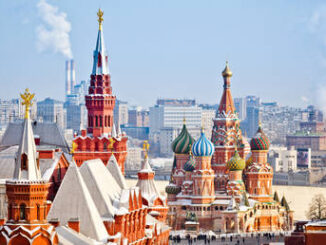
Increased signs of nuclear activity have been detected inside a sealed chamber at the abandoned Chernobyl plant in Ukraine. Scientists have identified a rising number of neutrons inside Subreactor Room 305/2. Neutrons are particles in an atom and are released during nuclear fission when the atom is split. This is what triggers the large amount of energy harvested at nuclear power plants. The fact that more are being recorded could mean that unknown reactions are taking place inside the inaccessible chamber.
We have only assumptions,’ Maxim Saveliev at the Institute for Safety Problems of Nuclear Power Plants (ISPNPP) in Kyiv, Ukraine, told Science Magazine. ‘There are many uncertainties, but we can’t rule out the possibility of an accident.’

However, scientists may be required to open it up and intervene in order to prevent another catastrophe. Neil Hyatt, a nuclear materials chemist at the University of Sheffield, said the situation was like ‘the embers in a barbecue pit’. ‘It’s a reminder to us that it’s not a problem solved, it’s a problem stabilized,’ he said. Sensors are trained in the inaccessible room to record the rising number of neutrons, allowing scientists to gauge the rising threat level.

On 26 April, 1986, reactor four at the Chernobyl Nuclear Power Plant, which was located close to the town of Pripyat in the Ukraine, exploded during a safety test. The safety test was designed to simulate a power-failure at the station, therefore emergency safety systems were purposefully turned off. After the explosion, a fire raged and was not contained until 4 May, and all the while the dangerous nuclear fallout permeated the air and traveled through the atmosphere to parts of western Europe and the USSR. Today, it’s known as the worst nuclear disaster in history, with, as of a 2005 report, 56 deaths attributed to either the explosion or the radiation.

Of those deaths, 47 were emergency service workers, and nine were children who died of thyroid cancer. The same IAEA report claimed that 4,000 more could still die as time goes by due to diseases like cancer as a result of the fallout, however some claim that the number of deaths could actually grow to be much higher.
Today, tourists can visit Chernobyl and the nearby Pripyat, which remains abandoned to this day, as long as they have a tour guide and follow the proper authorisation procedures. Certain areas, like the basement area of the hospital where the clothing and tools of the emergency responders were left, are still off-limits due to the fears of lingering radiation.



